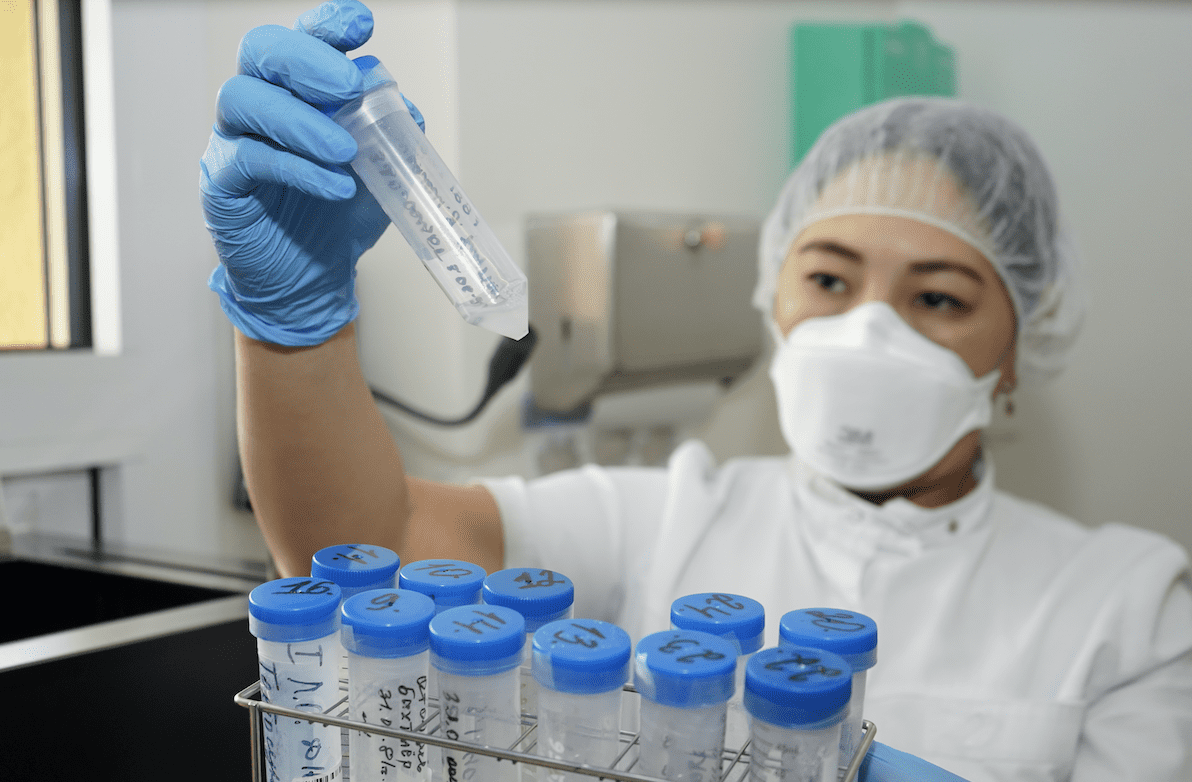Four Reasons Why the Kyrgyz TB Information System Worked for COVID-19
April 22nd, 2021 | viewpoint
The Cure Tuberculosis project, funded by the United States Agency for International Development (USAID), has been working with the government of the Kyrgyz Republic to roll out a national laboratory data management information system (LDMIS) to record and share tuberculosis (TB) lab results. When COVID-19 cases emerged in the country last year, the Cure Tuberculosis team quickly adapted the LDMIS to support the response.
With the need to provide COVID-19 test results as soon as possible, this rapid adaptation helped the Kyrgyz government make critical decisions to manage the pandemic. Here are four reasons why the USAID Cure Tuberculosis project was able to help the Kyrgyz government update and rollout the system in such a short period of time.
The Cure Tuberculosis project leveraged the flexibility of the LDMIS to add a module to capture tests for COVID-19. Initially developed by a USAID-funded project in 2016, the LDMIS was designed to record, store, and share TB lab results for quicker diagnosis and treatment uptake. Cure Tuberculosis, through its medical information systems team of experienced programmers and IT specialists, has continued to modernize the system and support the government to implement it across the country. In the project’s implementation area, the medical information system team had already thoroughly tested the LDMIS, received substantial feedback, and updated it for optimal user experience.
When the government asked the project to modify the LDMIS for COVID-19 testing, the team collaborated with the local service provider that works on government information systems, which facilitated the quick design, development, and implementation of the new module in the labs assigned to COVID-19 testing. Cure Tuberculosis also procured bar code scanners and printers for the labs.
At the time of the COVID-19 outbreak, the LDMIS was being used by the National Reference Laboratory and 30 other laboratories across the country. Since then, the system has been rolled out to an additional 36 labs and continues to be expanded nationwide. The LDMIS uses a simple interface, and barcodes on specimen samples automate the data entry process, reducing the time lab technicians spend entering information manually. Since the LDMIS is web-based, anyone with system credentials and an internet connection can access it from any device (computer, tablet, phone, etc.).
Once Cure Tuberculosis developed the COVID-19 module, it trained more than 70 people at 13 laboratories assigned to test for COVID-19. The on-the-job training was quick, and the medical information system team provided 24/7 user support to rapidly resolve problems. The features of the system—limited paperwork, no duplication of records, and automation of data entry—saved time and costs related to operation; improved data transparency; reduced errors; and ensured that people received their COVID-19 test results as quickly as possible.

The LDMIS is synchronized with the country’s medical information system, which includes the electronic medical record and electronic TB register. It is also connected to Tunduk, the national government information system, which allows the LDMIS to link to a patient’s data through their personal identification number (equivalent to a social security number). This allowed COVID-19 test results to be linked to a patient’s record, facilitating case management and contact tracing. Electronic data exchange kept laboratory specialists and health care workers safer by reducing in-person contacts. The integration of systems eliminated the need to enter data into multiple systems, reducing errors and improving data quality.
The integrated LDMIS COVID-19 module also allowed doctors to monitor a patient’s condition online, reducing their in-person contact with the patient and nurses working in the COVID-19 units.
The LDMIS dashboard supports the visualization and disaggregation of data and the dissemination of information. Data can be disaggregated by region, testing facility, results, and date, and can be exported in various formats. Access to high-quality data allows health care workers to make timely treatment decisions and health care administrators to monitor and map cases in real time and re-allocate resources to curb COVID-19 infections.
For example, the LDMIS data revealed that testing turn-around time was taking too long because of limited human resources. In response, the government increased the number of technicians at certain labs. The LDMIS data also informed the distribution of tests between labs so that no single lab became overloaded with tests to process.
At the height of the epidemic in July 2020, the LDMIS was the only reliable source of information on COVID-19 test results in the Kyrgyz Republic. As of March 31, 2021, 472,000 test results had been entered into the system, and the State Committee on Information Technologies and Communications awarded the Cure Tuberculosis project a certificate of recognition.
As the Cure Tuberculosis team continues to support the rollout of the LDMIS for TB and primary health care facilities, it will apply the following lessons and recommendations from its experience with the COVID-19 module adaptation:
We strive to build lasting relationships to produce better health outcomes for all.